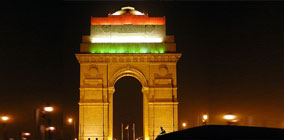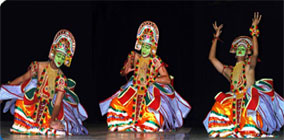Golden Triangle With Pushkar
Duration: 09 Nights / 10 Days
Places Covered: Delhi - Pushkar - Jaipur - Agra - Delhi
Day 01 - Arrival in Delhi
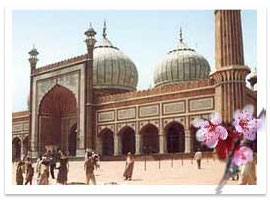
Delhi, India's capital has seen great empires rise and fall around it for millennia, with each new batch of rulers building over the works of their predecessors. As a result, the city abounds in monuments and ruins of stunning diversity. The seat of the world's largest democracy, it also boasts of magnificent symbols of government that pay architectural tribute to the ideals of self-rule and democracy. These co-exist side by side with wide multi-lane motorways, shopping malls, fast cars and ultramodern steel-glass office complexes that characterise any large 21st century metropolis.
Overnight at Delhi.
Day 02: Sightseeing around Delhi
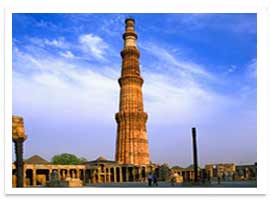
Day 03: Delhi to Pushkar by rail
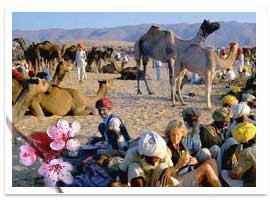
Pushkar, a short drive from Ajmer, is one of the holy cities of Hindu mythology. Built around a large natural lake ringed by hills and surrounded by desert, Pushkar finds mention in the Hindu epics and certain records suggest that the city may have been in existence since the 4th century BC.
Overnight will be at the camp.
Day 04 & 05: Sightseeing in Pushkar, visit the camel fair
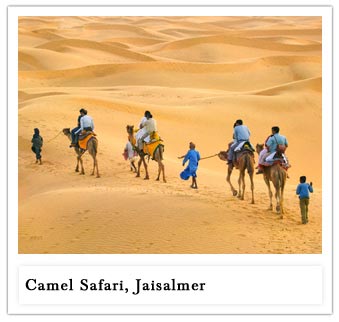
By the banks of the Pushkar Lake is India's only temple to Brahma, the creator of the universe. The solemn, hypnotic evening aarti ritual at the lake is not be missed.
In late fall, animal-rearers from all over the country descend upon Pushkar for the famed week-long animal fair. Hundreds and thousands of beautifully turned out camels, cattle and thoroughbred horses are on display, the dust thrown up by hooves concealing the city's features in a perpetual cloud of haze. Animal shows, competitions, races abound and the sleepy town buzzes with acrobats, tourists, animal trainers, curio sellers, photographers, filmmakers, gypsies and of course the animals in their surreal finery, who are all in it together in what surely ranks among the most unusual jamborees in the world.
At the fairground and various venues around it, there is entertainment galore, from low-brow parlour and circus tricks to highly sophisticated cultural performances. There will be the scintillating Shilpa Gram Arts and Crafts Fair, a cultural performance by Rajasthani troupe Kuchaman and the fabulous Desert Symphony Concert on one hand, and the fiercely contested camel milking, cross-breed cattle, rural sports, wrestling and matka race (which local women run balancing earthen pitchers on their heads) competitions on the other.
Visitors are welcome to pit their skills against locals at a game of kabaddi or matka phod (where teams have to make human pyramids to reach and break an earthen pitcher suspended high above the ground). You may also participate in the highly popular and competitive Beard and Moustache Competition but be forewarned that you will up against adversaries who are formidably endowed with facial hair and a crushing defeat is inevitable.
Less adventurous visitors may take a memorable camel or camel cart ride to the sand dunes bordering the fairground, or visit Sunset Point for a terrific display of colours in the desert sky.
The Pushkar Animal Fair is one of the most exotic highlights of your luxury holiday in the Indian subcontinent.
Overnight will be at the camp.
Day 06 : Pushkar to Jaipur by road
After breakfast at the camp, drive to Jaipur in a spacious, comfortable Our approved vehicle.
Jaipur, also known as the 'Pink City' from the facelift it received in 1853 to celebrate a visit by Prince Albert, is dotted with havelis (traditional mansions), bazaars, opulent palaces and rugged majestic forts that showcase the glorious past of its rulers, the Rajputs.
The Rajput princes were fierce warriors some of whom declared loyalty to the invading Mughals and proved to be formidable allies of the empire. Among them was King Jai Singh II, whom the Mughals gave the title Sawai Maharaja, or "King and a quarter". Jaipur gets its name from this valiant king.
In the evening, visit the Birla Temple. A stunning white marble structure, the three towers of the Birla Temple stand for three different approaches to religion. Carvings on the ornate pillars celebrate Hindu gods and goddesses along with Christ, Virgin Mary and St. Francis of Assissi. Don't miss the hypnotic evening Aarti, the ritual lighting of oil lamps.
Overnight will be at Jaipur.
Day 07: Sightseeing in Jaipur
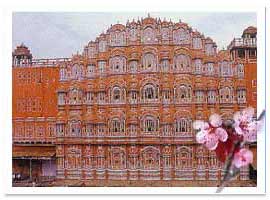
Situated on the top of a hill, the magnificent Amber Fort Palace offers a panoramic view of the old city. Established in 1592, its rugged exteriors believe the delicate architecture inside, a rare fusion of traditional Rajasthani and Islamic styles. Reach the fort the old fashioned way, atop a ceremonial elephant along a cobbled path up that opens into several havelis, step wells, courtyards and temples. Visit Sheesh Mahal or chamber of mirrors, Jas Mandir with its ornate ceilings and latticework and the stunning Shila Devi temple with its intricately carved silver door.
Proceed for further sightseeing.
The sprawling City Palace has been home to the rulers of Jaipur since the 18th century. The architecture of the palace is a blend of traditional Rajasthani and Mughal styles. The City palace Museum is located here and houses various items from Jaipur's princely and warrior past.
The scientific-minded King Jai Singh II, an astronomy enthusiast, commissioned five observatories named Jantar Mantar around West Central India in the early 1700s. The one in Jaipur is the largest and the best preserved. The massive architectural instruments are constructed out of local stone and marble some of which are still in use. We shall walk through and explore this surreal maze of giant geometric objects.
The exquisite outer facade of Hawa Mahal, the "Palace of Winds," resembles a manmade honeycomb and is one of Jaipur's most iconic and oft photographed sights. Designed to facilitate maximum air circulation and cross ventilation, the five-storied Hawa Mahal is made of lime and mortar, and decorated with impossible intricate trelliswork. From the privacy of its ornate jharokhas (traditional Rajasthani windows), the ladies of the court could gaze out at life in the streets below.
You have the evening to yourself.
Overnight will be at Jaipur.
Day 08: Jaipur to Agra by road, visit Fatehpur Sikri en route
After breakfast at the hotel, drive to Fatehpur Sikri.
Fatehpur Sikri, or the "City of Victory", built by Emperor Akbar in 1569 in honour of sufi saint Salim Chishti was the capital of the Mughals for 14 years. The white marble Tomb of the Salim Chisti with its intricately carved marble screens occupies pride of place in the central courtyard of the structure.
Attractions include the colossal Buland Darwaza, a victory gate built to mark the conquest of Gujarat by Emperor Akbar, the Diwan-i-Aam where the emperor held his legendary hearings with the general public and the Diwan-i-Khas where he held private consultation with his nine ministers, or as he called them, his navaratna or nine gems.
Fatehpur Sikri also houses the palace of Jodhabai, Akbar's Hindu wife, and the house of the legendary Birbal - Akbar's Hindu minister and one of the navaratnas - the tales of whose extraordinary wit and wisdom are the stuff of popular culture in India, inspiring countless comic books and children's animation TV shows.
Continue to Agra.
The Mughal capital of Agra on the banks of the Yamuna River is a bustling town teeming with narrow, winding alleyways that hark back to an era gone by. Dotted by magnificent monuments including UNESCO World Heritage SIte Taj Mahal, the city is a dazzling contrast of red sandstone and white marble structures.
Later in the evening, attend Mohabbat-e-Taj, a performance that tells the story of the Taj Mahal through the medium of modern dance.
Overnight at Agra.
Day 09: Sunrise over the Taj Mahal, sightseeing in Agra
Proceed for an early morning visit to the Taj Mahal.
Built by Mughal Emperor Shah Jahan as a memorial to his queen Mumtaz Mahal and designed by Persian architect Ustad, the magnificent Taj Mahal is one of the seven wonders of the world. A massive white marble structure so delicate that it appears to float in the air, the Taj is otherworldly in its beauty and is best viewed in moonlight or at dawn and dusk. The close-up view reveals breathtakingly intricate inlay work carved into the marble, and bears eloquent testimony to the triumph of Mughal art, culture and architecture at its peak. No holiday in India is complete without the Taj.
Return to the hotel for breakfast. Later, proceed for sightseeing.
A beautifully maintained tree-lined monument at Sikandra marks the grave of the illustrious Akbar the Great. A great believer in harmony and equality of all religions, this visionary Mughal Emperor created Din-i Ilahi, a unique religion that combines the fundamentals of Islam, Hindusim, Buddhism and Christianity. His memorial imbibes architectural motifs of all the faiths that inspired him.
Standing across the river from the Taj, the majestic red sandstone structure of Agra Fort was erected in 1565 by Mughal Emperor Akbar the great. Little did he know that the same fort would later serve as prison for his grandson Emperor Shah Jahan in the end of his days. From his prison perch of Musamman Burj, an exquisite octagonal marble tower atop the fort, Shah Jahan would spend his last days looking out longingly at the Taj.
Itmad-ud-Daulah is perhaps the Mughal Empire's best kept secret. Empress Nur Jehan, wife of Jehangir, son of Akbar, commissioned the structure as a memorial to her father. Mistakenly called Baby Taj, Itmad-ud-Daulah in fact is decades older than the Taj, and may have served as its design blueprint.
Overnight at Agra.
Day 10: Agra to Delhi by road, tour ends
Breakfast will be served at the hotel.
The morning is free. You'll be driven to Delhi in the afternoon. Later, the Our team will escort you to the international airport for your flight home.

| Bhutan Tour | ||||||||||
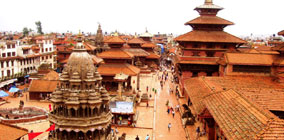
|
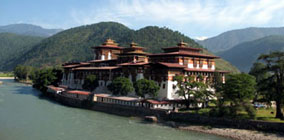
|
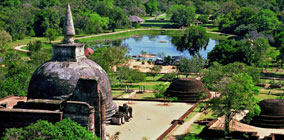
|
Vacaciones con encanto
| » El triangulo de or 7 días | » Reflejos de Rajasthan con Varanasi y Khajuraho | » Viaje a los majestuosos templos y palacios de la India |
| » Pintoresco Rajsthan Con El Taj Mahal | » India Clásica Con Nepal | » Arquitectura, turismo en la Ciudad Rosa y relax en Goa |
| » Viaje a la Tierra del Tigre | » Viajar a Varanasi, India | » India Fascinante y la Belleza Natural de Nepal y Tibet |
| »India Sur con Backwaters | »Itinerario India Sur | » Templos y patrimonio de la cultura de India Sur |
Art of Living
| » The Great Taj Mahal Tour | » El triangulo de or 7 días | » Reflejos de Rajasthan con Varanasi y Khajuraho |
| » North India Highlights Tour |


